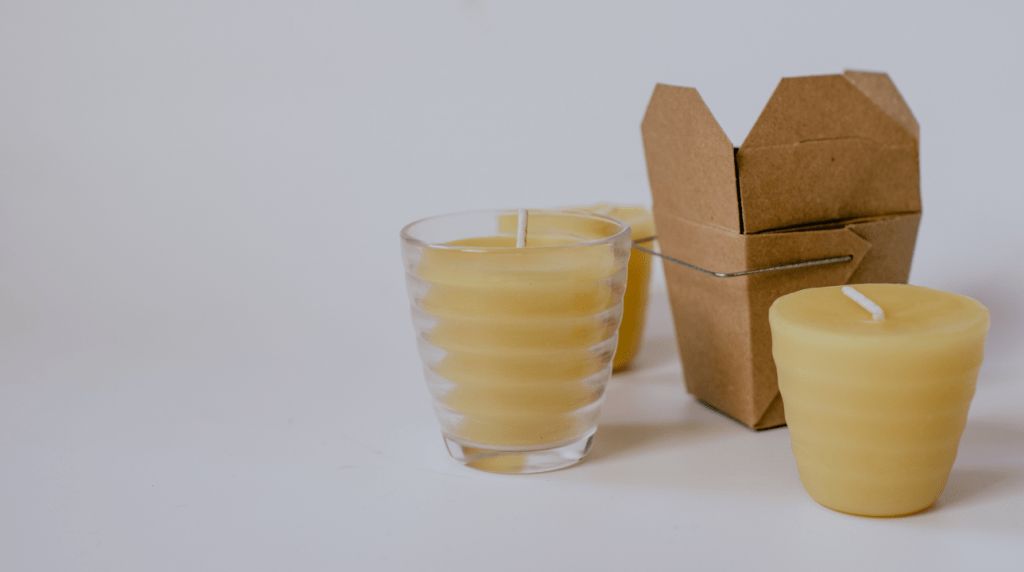Is It Better To Use Beeswax Or Soy Wax For Candles?
Candlemaking has become an increasingly popular hobby and small business in recent years. Handmade candles are appreciated for their beautiful colors, enticing scents, and warm ambiance. Candlemaking also allows for creativity and self-expression through unique scent combinations and decorative designs. Many enjoy candlemaking as a calming, therapeutic creative outlet. The popularity of homemade candles has also grown due to their perceived benefits over standard commercially produced candles, such as using natural waxes and scents.
When making candles, two of the most common wax options are beeswax and soy wax. Each has its own advantages and characteristics. This article will provide an in-depth comparison of beeswax versus soy wax candles to help determine which is better for different applications. Key factors like scent throw, burn time, appearance, sustainability, and price will be examined. With the information provided, candlemaking enthusiasts can decide which wax best suits their needs and preferences.
Beeswax Overview

Beeswax is a natural wax produced by honey bees. It is secreted from special glands in the bee’s abdomen and used by bees to build the walls of their honeycomb. Beeswax has a sweet, honey-like scent and is composed primarily of fatty acids, alcohols, and hydrocarbons.
Unlike paraffin wax, beeswax is non-toxic and environmentally friendly. It does not produce petrochemical emissions when burned. Beeswax is also biodegradable and antimicrobial. When used in candle making, beeswax helps candles burn longer and cleaner than other types of wax.
Overall, beeswax is praised for being a sustainable, natural alternative to synthetic waxes. Candlemakers appreciate its versatility and aroma. Many also value supporting the livelihoods of beekeepers when opting for beeswax.
Soy Wax Overview
Soy wax is made from hydrogenated soybean oil. The soybeans used are a renewable resource grown annually on farms (TheCandleStudio.com, 2019). This makes soy wax an eco-friendly option compared to paraffin wax which is made from nonrenewable petroleum oil. Soy wax is highly customizable allowing candle makers to add different amounts of natural additives like essential oils or vegetable oils to achieve desired properties (WaxPoeticCandleBar.com, 2021).
Aroma
Beeswax candles have a light, sweet, honey-like scent that comes naturally from the wax itself. This subtle fragrance is released into the air as the candle burns, creating a pleasant ambiance. The beeswax aroma is delicate yet noticeable, making beeswax an excellent choice for candles intended to provide aromatic benefits.
Soy wax, on the other hand, has virtually no discernible scent of its own. The wax is odorless, which allows soy candles to showcase fragrance oils without interference. If you want a candle with a strong, consistent fragrance, soy is the better wax since its lack of inherent scent won’t compete with the fragrances added.
Whether opting for the sweetness of beeswax or the neutrality of soy, the aromas of the two waxes offer different experiences. Beeswax provides a subtle background honey note, while soy wax allows poured fragrances to shine. For scent-focused candles, soy wax may be the better choice according to this source.
Burn Time
When it comes to burn time, beeswax candles tend to outperform soy wax candles. According to Candles by Luma, beeswax candles have a higher burn time because beeswax has a higher melting point than soy wax. The denser material of beeswax means it burns slower and more evenly than the softer soy wax.
Additionally, Beeswax Co. explains that the longer burn time of beeswax is due to it being a denser material than soy wax. The density means beeswax candles tend to burn for longer than soy candles of the same size.
In summary, the research indicates beeswax has a clear advantage over soy wax when it comes to burn time. The dense nature of beeswax leads to slower, more even burning and longer burn times compared to soy wax candles.
Melting Point
Beeswax has a higher melting point than soy wax. The melting point of beeswax is around 145-150°F, while the melting point of soy wax is typically 115-135°F. This means beeswax candles can withstand higher temperatures before starting to melt or lose their shape (Source).
The higher melting point makes beeswax a good choice for candles used in warmer environments or for containers without much insulation. Soy wax may be prone to melting or collapsing in high heat. However, the lower melting temperature of soy wax means it melts more quickly once lit, allowing for a fuller melt pool and cleaner burn (Source). So there are advantages to each wax type depending on the usage.
Color
One of the biggest differences between beeswax and soy wax is how they take color. Soy wax is known for being very easy to color and dye because it has a pure white color in its natural form. You can add any oil-soluble dye to soy wax to achieve vibrant colors from bright reds and oranges to deep purples and blues. The wax will take the color evenly, resulting in rich and consistent hues throughout candles and other products.
Beeswax, on the other hand, has a naturally yellow or golden color that comes from the honeycomb itself. While you can add dyes to beeswax as well, its natural yellow hue will always come through to some degree. The result is more muted, vintage-looking colors rather than the bright vivid tones you can achieve with soy wax. Many candle makers actually prefer the soft glow of colored beeswax candles compared to the bold colors of soy. But those looking for a specific color theme may find soy wax easier to work with.
Ultimately, the type of coloring desired will help determine whether soy or beeswax is better for a particular candle project. Soy wax offers unlimited coloring potential, while beeswax lends itself to more subdued, antique-styled colors.
Price
When it comes to price, soy wax often has the advantage over beeswax. Soy wax is derived from soybeans, which are an abundant, renewable crop. This makes soy wax relatively inexpensive and easy to obtain. Beeswax, on the other hand, must be harvested from beehives in a labor-intensive process. As a result, beeswax tends to cost significantly more than soy wax. According to Jessica Welling, if you want a small quantity of beeswax, it can cost around $9.35 per pound, whereas soy wax in bulk may only be $1-2 per pound. For candle makers interested in minimizing their material costs, soy wax provides a more budget-friendly option.
The lower price of soy wax makes it accessible for small businesses and hobby candle makers. Beeswax’s high price point can be prohibitive for some. As Self Made Candle discusses, soy wax’s affordable pricing allows more people to explore candle making. So for those watching their wallet, soy wax candles are typically the most economical choice.
Sustainability
When it comes to sustainability, soy wax has an advantage over beeswax. Soy wax is made from soybean oil, which is a renewable resource as long as soybeans are grown each year. Beeswax, on the other hand, depends on honeybees to produce wax from their hive. With declining honeybee populations in recent years, the availability of beeswax is less stable and sustainable long-term compared to soy wax.
According to Selfmadecandle.com, soy wax is more eco-friendly because it produces less soot when burned, reducing its environmental impact. The renewable nature of soy as a crop, compared to uncertainties around bee populations, gives soy wax an edge for sustainability.
Conclusion
Having analyzed some of the key qualities and differences between beeswax and soy wax, we find that each type of candle wax has certain advantages depending on the desired use.
Beeswax candles have a beautiful natural honey aroma, long burn time, and classic aesthetic appeal. The higher melting point of beeswax makes these candles a good choice for warm environments or for containers without a pool of melted wax. However, beeswax is generally more expensive and limited in supply.
Soy wax candles are highly customizable, available in a wide array of colors, and made from a renewable resource. The lower melting temperature allows soy wax to pulled into intricate designs but requires more care in warmer conditions. Soy wax is also more affordable and eco-friendly.
For gift candles, decorative uses, or establishing an upscale ambiance, beeswax has a timeless elegance. For homemade candles, novel designs, or large batch production, soy wax offers creative possibilities. Consider the setting, budget, sustainability, and visual appeal when selecting between these two quality candle waxes.




